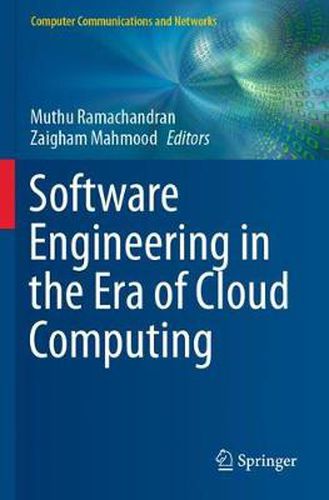Readings Newsletter
Become a Readings Member to make your shopping experience even easier.
Sign in or sign up for free!
You’re not far away from qualifying for FREE standard shipping within Australia
You’ve qualified for FREE standard shipping within Australia
The cart is loading…






This title is printed to order. This book may have been self-published. If so, we cannot guarantee the quality of the content. In the main most books will have gone through the editing process however some may not. We therefore suggest that you be aware of this before ordering this book. If in doubt check either the author or publisher’s details as we are unable to accept any returns unless they are faulty. Please contact us if you have any questions.
This book focuses on the development and implementation of cloud-based, complex software that allows parallelism, fast processing, and real-time connectivity. Software engineering (SE) is the design, development, testing, and implementation of software applications, and this discipline is as well developed as the practice is well established whereas the Cloud Software Engineering (CSE) is the design, development, testing, and continuous delivery of service-oriented software systems and applications (Software as a Service Paradigm). However, with the emergence of the highly attractive cloud computing (CC) paradigm, the tools and techniques for SE are changing. CC provides the latest software development environments and the necessary platforms relatively easily and inexpensively. It also allows the provision of software applications equally easily and on a pay-as-you-go basis. Business requirements for the use of software are also changing and there is a need for applications in big data analytics, parallel computing, AI, natural language processing, and biometrics, etc. These require huge amounts of computing power and sophisticated data management mechanisms, as well as device connectivity for Internet of Things (IoT) environments. In terms of hardware, software, communication, and storage, CC is highly attractive for developing complex software that is rapidly becoming essential for all sectors of life, including commerce, health, education, and transportation.
The book fills a gap in the SE literature by providing scientific contributions from researchers and practitioners, focusing on frameworks, methodologies, applications, benefits and inherent challenges/barriers to engineering software using the CC paradigm.
$9.00 standard shipping within Australia
FREE standard shipping within Australia for orders over $100.00
Express & International shipping calculated at checkout
This title is printed to order. This book may have been self-published. If so, we cannot guarantee the quality of the content. In the main most books will have gone through the editing process however some may not. We therefore suggest that you be aware of this before ordering this book. If in doubt check either the author or publisher’s details as we are unable to accept any returns unless they are faulty. Please contact us if you have any questions.
This book focuses on the development and implementation of cloud-based, complex software that allows parallelism, fast processing, and real-time connectivity. Software engineering (SE) is the design, development, testing, and implementation of software applications, and this discipline is as well developed as the practice is well established whereas the Cloud Software Engineering (CSE) is the design, development, testing, and continuous delivery of service-oriented software systems and applications (Software as a Service Paradigm). However, with the emergence of the highly attractive cloud computing (CC) paradigm, the tools and techniques for SE are changing. CC provides the latest software development environments and the necessary platforms relatively easily and inexpensively. It also allows the provision of software applications equally easily and on a pay-as-you-go basis. Business requirements for the use of software are also changing and there is a need for applications in big data analytics, parallel computing, AI, natural language processing, and biometrics, etc. These require huge amounts of computing power and sophisticated data management mechanisms, as well as device connectivity for Internet of Things (IoT) environments. In terms of hardware, software, communication, and storage, CC is highly attractive for developing complex software that is rapidly becoming essential for all sectors of life, including commerce, health, education, and transportation.
The book fills a gap in the SE literature by providing scientific contributions from researchers and practitioners, focusing on frameworks, methodologies, applications, benefits and inherent challenges/barriers to engineering software using the CC paradigm.